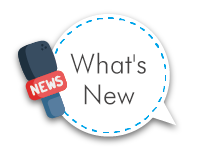Search Results for:
English Language
Introduction The English Language curriculum in school aims to help students become independent lifelong learners and problem solvers who can meet the changing socio-economic demands and communicate effectively in English. To achieve this, there are different activities for students to use English in various authentic situations and contexts. Students are encouraged to read widely and … Continue reading "English Language"
Library
Introduction The school adopts a whole-school approach to foster a reading culture among pupils at different key stages. Adequate reading skills are demonstrated to develop pupils’ lifelong learning capacity. Through the library lessons, the school provides a platform for students to exchange ideas on reading, and to engage pupils in different activities beyond the classroom. … Continue reading "Library"
Physical Education
Introduction Physical Education (PE) develops the skills, knowledge, values and attitudes needed for establishing and enjoying an active and healthy lifestyle, as well as building student confidence and competence in facing challenges as individuals and in groups or teams, through a wide range of learning activities. Objectives 1. To promote pupils an active and healthy … Continue reading "Physical Education"
Music
Inroduction The Music curriculum in school aims to develop students’ creativity and imagination, music skills and processes, critical responses in music and understanding music in context, through integrated activities of creating, performing (singing and instrumental playing) and listening. Objectives 1. To develop students’ abilities in creating, performing and appraising music. 2. To enrich students’ music … Continue reading "Music"
Visual Arts
Introduction The Visual Arts curriculum in school aims at developing pupils’ abilities of art making, and art appreciation and criticism, perceptual abilities, generic skills and metacognition. Studying Visual Arts enables pupils to enrich their aesthetics and arts experiences, as well as strengthen their abilities to appreciate and create various forms of visual arts work aesthetically … Continue reading "Visual Arts"
Mathematics
Introduction The Mathematics curriculum in school aims at helping students to acquire the ability to explore, conjecture and reason logically. It is a powerful means of communication, a foundation for the study of other disciplines, and an intellectual endeavor. Mathematics plays an important role in helping students develop necessary skills for lifelong learning. To achieve … Continue reading "Mathematics"
Chinese Language
中文科 非華語學生居於香港,必須具備一定的中文能力,才能融入本地社會。本校在中文教學上以聽、說、讀、寫為本,輔以不同學習活動,提高學生的學習動機,讓學生認識、瞭解及欣賞中國文化。同時,本校亦舉辦家長班,為非華語家長提供接觸中文的機會。 目標: 1. 提升學生聆聽及說話能力。 2. 設計校本寫作工作紙,加強學生寫作能力。 3. 培養學生對學習中國語文的興趣,讓他們欣賞中國文化。 4. 啟發對中華民族文化的認同,加強學生對社會的責任感。 齊齊慶中秋 學校定期為學生安排不同的活動,增進他們對中國文化的認識。活動包括透過播放動畫,完成活動工作紙及製作相關手工藝,讓學生認識節日的起源和特色;走進社區,參與屏山文物徑導賞團,認識圍村文化及古蹟。 端午節的龍舟和糉子裝飾 屏山文物徑導賞團 我們鼓勵學生多說和多聽中文,以提升學習中文的興趣。除運用資訊科技外,我們在課堂中進行小組討論、角色扮演和匯報,同時舉行不同類型的校內活動,如唐詩朗誦比賽、中文日等。 攤位遊戲 唐詩朗誦比賽 家長工作坊 透過中文工作坊,讓家長學好中文及加深對中華文化的認識。活動包括書法練習、認識十二生肖、製作土樓及蒙古包模型、運用自學中文的電腦軟件等。 中文繪本學習圈 整體目標 教師方面: - 推動官小間跨校教研的協作交流文化 - 建立教授非華語學生的繪本教研團隊,並進行教研 - 提升學與教素質 學生方面: - 提升非華語生學習中文的興趣與說話能力 - 提升非華語生的創意及自主學習能力 - 培養良好品德 3.家長方面: - 讓家長和學生享受親子共讀繪本的樂趣 繪本學習圈書目 2021-2022年度 2022-2023年度 1.《如果不洗手》 1.《兩個花旦》 2.《文具大逃亡》 3.《一個不能沒有禮物的日子》 學生佳作 學生認識粵劇,還製作牌坊、臉譜和繪本,發揮創意。

